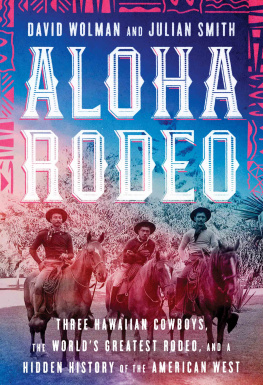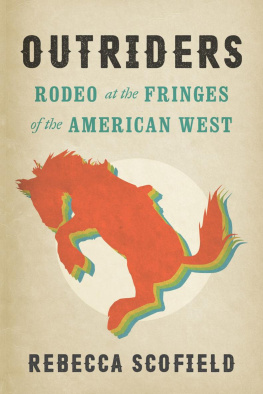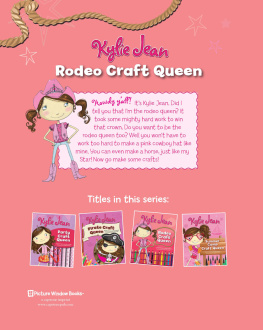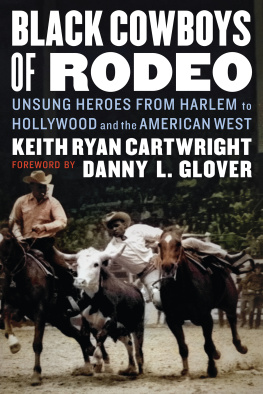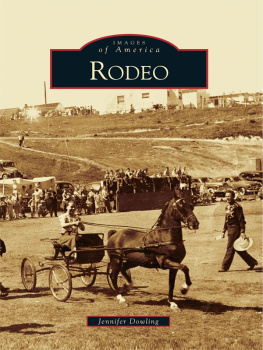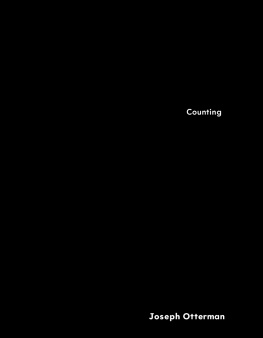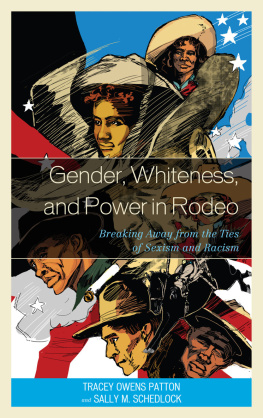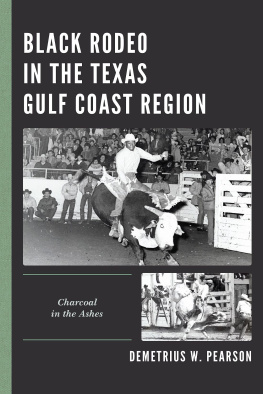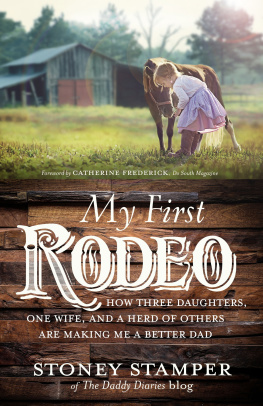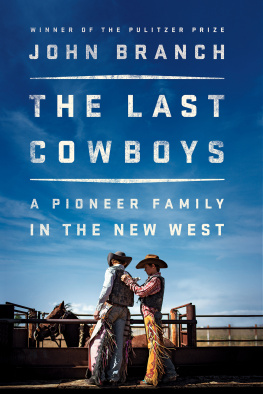A UGUST 21, 1908. A drizzly late-summer morning on the high plains of eastern Wyoming. The sun was just rising over Cheyenne, but hundreds of competitors and thousands of spectators were already milling about the arena on the north edge of town. They sipped home brews, chatted about the coming winter, and tried to catch a glimpse of the men the local papers had dubbed the lithe youngsters from the far Pacific.
When Ikua Purdy and his two cousins finally entered the rodeo grounds of the bustling frontier town, the crowd eyed them with suspicion and mild amusement. Like the other wranglers, the three men wore boots, blue jeans, and spurs. But head to toe, their gear looked different: broader hat brims, smaller spurs, leather chaps, and braided rawhide lassos. Around their hats they wore strings of local wildflowers that evoked their home on the island of Hawaii.
Few people saw them as a threat. This was Wyoming, after all, home to rodeo champions and cattlemen as rugged as the landscape they worked. Still, they were clearly outsiders, like unknown drifters stepping into a dimly lit saloon.
This morning, though, they had stepped onto the biggest stage there was: Cheyenne Frontier Days. What had started as little more than an entrepreneurial whim a decade earlier hadwith help from William Buffalo Bill Cody, Annie Oakley, Theodore Roosevelt, and countless Native Americansballooned into the most prestigious cultural showcase and rodeo competition on Earth. By 1908, the arrival of contestants from the South Pacific was proof that the Daddy of Em All had become the premier rodeo. Whoever triumphed here was the undisputed champion of the world. Every year so far, local boys from Wyoming had won the cattle roping competition. The Hawaiians had traveled almost four thousand miles to try to break that streak.
What the press, spectators, and other competitors didnt know, and indeed almost no one in the country did, was that ranchers in Hawaii had been breaking horses, roping wild bulls, and herding thousands of cattle before anyone in the American West. These men, like their fathers and grandfathers, made their living doing exactly what all the other contestants did: they were cowboys. Paniolo, in Hawaiian. Damn good ones at that.
Yet side glances and snickers were not the only challenges that Ikua Purdy, Jack Low, and Archie Kaaua had to contend with during their stay in Wyoming. A great deal rested on their shoulders. The overthrow of Hawaiis monarchy and the forced annexation of the country by the United States a decade earlier had traumatized an independent nation whose traditions dated back centuries. The young riders brought with them the pride and anxiety of an entire people reeling from a sustained attack on their cultural identity and apprehensive about their future under the rule of overlords an ocean away.
The halls of Washington echoed with debate about how best to deploy Americas new military and economic might. Those who espoused empire-building were winning. At the turn of the twentieth century, Americas frenzy of imperialism took the Stars and Stripes to Cuba and the Philippines, Puerto Rico, Guam, and Hawaii.
On a map, the archipelago is a tiny arcing chain of dots amid the largest expanse of blue on the planet, like a spatter of paint on a wall. But Hawaiis isolation is, paradoxically, what makes the islands story, and that of its cowboys, one of interconnectedness. That thread connects Polynesian voyagers, Spanish conquistadores, and British seafarers bearing unexpectedly far-reaching gifts. It weaves through international trade in whale oil, sandalwood, beef, and leather goods, and extends to the birth of that most American of sports, rodeo, which at the turn of the twentieth century was spreading like prairie wildfire.
This is the story of the rise of paniolo culture in Hawaii and rodeo in America, Wyoming in particular, and the remarkable year when those worlds collided. It overturns simplistic notions of cowboys and Indians, and explores questions of identity, imperialism, and race. Most of all, though, it is a tale about people: warriors, ranchers, showmen, cowgirls, missionaries, immigrants, royalty, and the countless unnamed individuals whose lives, through the micro-accidents of history, intertwine in this little-known saga of the American West.
DESPITE THE MIST AND unseasonably cold wind, tens of thousands of people packed Frontier Park that August morning. One paniolo, Archie Kaaua, lassoed and dispatched his steer with such ease that locals did a double take. But flukes happen in rodeo. Champions are consistent. The cowboys of the Front Range of the Rockies, embarrassed by the Hawaiians performance, were suddenly eager to put them in their place.
The next competitor, mounted on a horse he had met only days before, was Archies cousin Ikua Purdy. While most spectators saw him as little more than a curiosity, a handful of them knew better. At rodeos in the islands, Ikua had posted times that put him in the highest echelons of the sport, and within striking distance of five-time U.S. roping champion and Wyoming native son Angus MacPhee. The small, wiry Hawaiian in the brightly colored striped shirt was the real deal: not just the best paniolo in Hawaii, but one of the best cowboys anywhere.
Ikua glanced up to see the parting clouds beyond the crowded grandstand. Then he took an extra turn of the reins around his left hand, checked that his lariat was untangled, and called out, Steer! The gates flew open and the animal bolted into the arena.
A moment later Ikua kicked his heels, and man and horse lunged forward as one.
T HE FIRST CATTLE TO set foot in Hawaii didnt live to see sunset.
It was February 19, 1793, and HMS Discovery had arrived at the island of Hawaii after a month-long journey from what is now Southern California. Captain George Vancouver commanded the ten-gun Royal Navy ship, which was midway through a five-year expedition to explore and map the coast of North America.
Before leaving the mainland, Vancouver and his hundred-man crew had loaded ten black longhorn cattle on board. These beasts crossing the Pacific had transatlantic roots: the Spanish had brought cattle to the New World even before Hernn Corts conquered the Aztecs in 1521. By the end of the eighteenth century, large-scale sheep and cattle ranching was entrenched throughout the territory of New Spain, especially in Alta California.
Vancouver had been dispatched to the Pacific Coast in the aftermath of a near war between Great Britain and Spain over the ownership of northwestern North America. He had orders to assert British claims and collect compensation from Spain for any seized British assets. When the Discovery arrived in Alta California in late 1792, a Spanish commandant presented Vancouver with the longhorns.
The animals were crammed belowdecks on the Discovery so tightly they could barely move. They lived ankle-deep in their own filth during the voyage, with scant portions of food and water. The wide span of their horns, which for bulls could reach six feet from tip to wicked tip, made the situation only more crowded and dangerous.
When Discovery dropped anchor off the northwest coast of Hawaii, the animals situation went from bad to worse. A bull and a cow were dragged up on deck, where they were blasted by the sudden glare and heat of the tropical sun. Sailors strapped them into harnesses and lowered them over the side of the ship into narrow Polynesian canoes that bobbed in the waves.

